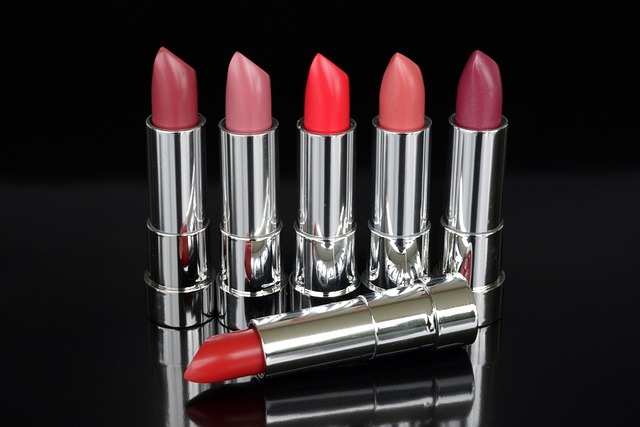Plant-based red lipsticks are gaining popularity as a sustainable alternative to traditional cosmetics. Made from natural ingredients like plant extracts, essential oils, and waxes, these lipsticks benefit skin health, avoid harsh chemicals, and reduce environmental impact. With buildable coverage, they offer both natural and bold looks, available in fiery orange to deep burgundy shades. Apply with fingertips or brush, blend mistakes with a damp sponge for a soft edge, and pair with neutral or bold makeup looks.
Discover the vibrant world of plant-based lipsticks – a sustainable, natural alternative to conventional cosmetics. In this guide, we explore the benefits of these eco-friendly products, from gentle, organic ingredients to their minimal environmental footprint. Learn about the power of nature’s remedies for your lips while achieving that iconic red lipstick look. From understanding key ingredients to application tips and trendy hues, embrace a beauty routine that’s kind to both you and the planet.
- Understanding Plant-Based Lipstick: The Ingredients and Their Benefits
- The Environmental Impact: Why Choose a Sustainable Alternative?
- Application Tips and Trends: Rocking Your Red Plant-Based Look
Understanding Plant-Based Lipstick: The Ingredients and Their Benefits

Plant-based lipsticks are gaining popularity among beauty enthusiasts who seek sustainable and natural alternatives to traditional cosmetic products, especially when it comes to iconic items like red lipstick. These lipsticks differ from their conventional counterparts in that they use plant-derived ingredients instead of synthetic substances. Common components include plant extracts, essential oils, and natural waxes, which not only offer a range of benefits for the skin but also contribute to a more eco-friendly beauty routine.
One of the key advantages is the absence of harsh chemicals often found in conventional red lipsticks. Many plant-based formulas are formulated to be cruelty-free and free from parabens, sulfates, and other potentially harmful additives. Additionally, plant extracts can provide moisture and nourishment to lips, reducing dryness and flaking commonly associated with wearing red lipstick for extended periods.
The Environmental Impact: Why Choose a Sustainable Alternative?

In today’s eco-conscious world, consumers are increasingly seeking sustainable alternatives for their beauty routines, and one product that has been at the forefront of this movement is plant-based red lipstick. The traditional cosmetic industry has long been associated with environmental harm due to its reliance on non-renewable resources, harsh chemicals, and excessive packaging waste. By opting for a plant-based lipstick, consumers can significantly reduce their ecological footprint.
Plant-based cosmetics offer a more sustainable approach by utilizing natural ingredients derived from plants, flowers, and fruits. These lipsticks are free from toxic chemicals often found in conventional makeup, making them not only kinder to the environment but also safer for your skin. Moreover, many plant-based brands focus on minimal and recyclable packaging, ensuring that your beauty choices align with a greener lifestyle without compromising on style or performance, especially when it comes to the iconic vibrant red lipstick.
Application Tips and Trends: Rocking Your Red Plant-Based Look

When it comes to applying plant-based red lipstick, buildable coverage is key. Start with a thin layer for a natural flush and layer as desired for a bold, vibrant look. Use your finger tips or a brush for precise application, focusing on the center of your lips first before spreading outwards for a seamless finish.
Staying true to the eco-friendly nature of these lipsticks, stay away from harsh lines. Blend any mistakes with a damp sponge for a soft, diffused edge. Experiment with different shades of red lipstick, from fiery oranges to deep burgundies, and pair them with neutral or bold makeup looks. The beauty of plant-based cosmetics lies in their versatility, so feel free to get creative!
